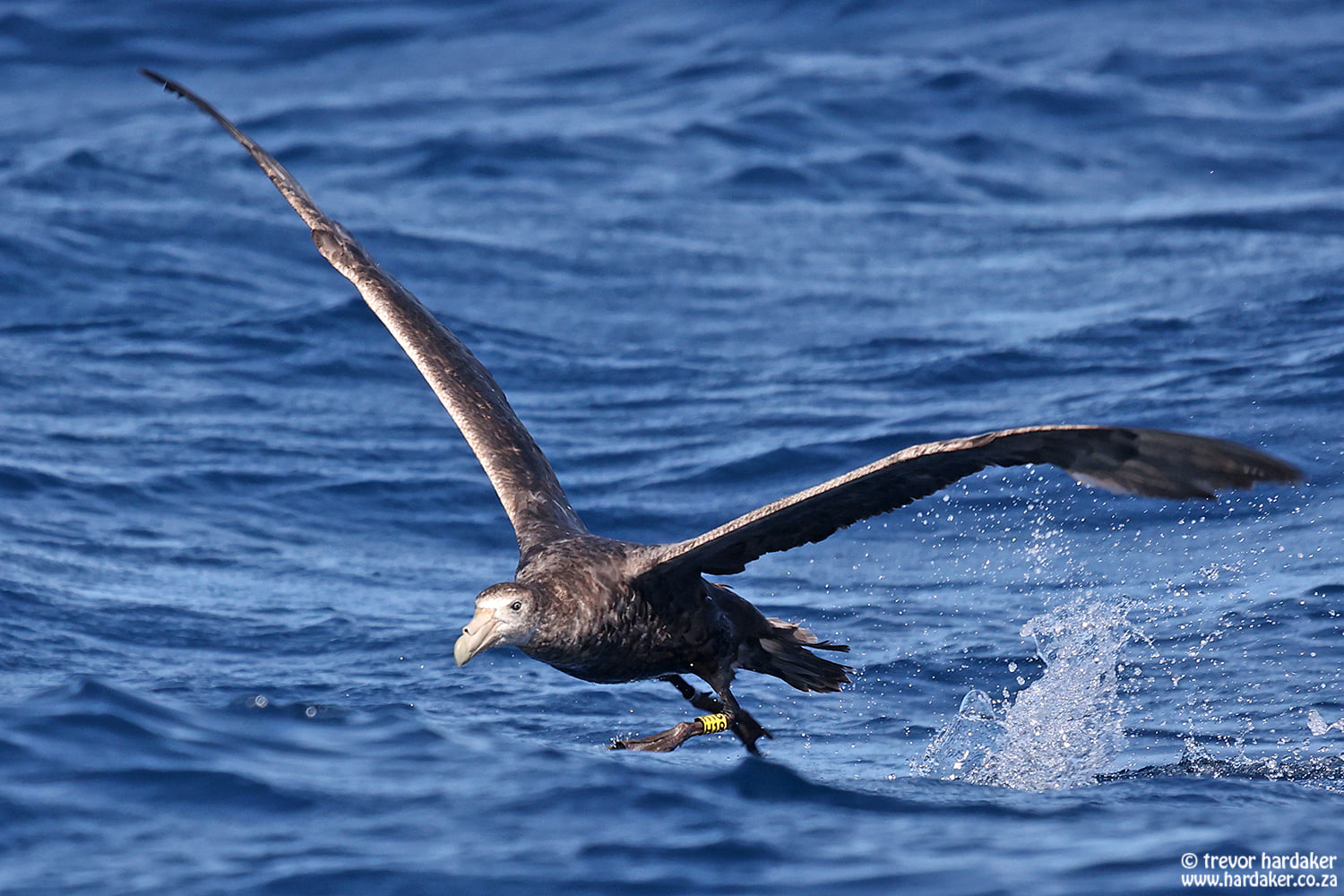 A Southern Giant Petrel takes flight; photograph by Trevor Hardaker
A Southern Giant Petrel takes flight; photograph by Trevor Hardaker
Júlia Finger (PhD candidate Universidade do Vale do Rio dos Sinos, Brazil) and colleagues have published in the journal Antarctic Science on the habitat selection of Southern Giant Petrels in the Southern Ocean and their potential role in monitoring the Antarctic Peninsula for practices such as illegal fishing.
Writing to ACAP Latest News, Julia said, “Breeding petrels used a large range of areas in the Peninsula, but also travelled to the tip of Tierra del Fuego in an area with fishing activities. This paper highlights how petrels, especially females, are susceptible to impacts of fisheries outside the Antarctic even during the breeding season and also how they connect both regions. We also propose that [Southern Giant Petrels] can be used as platforms to monitor the Antarctic Peninsula."
The paper’s abstract follows:
“The southern giant petrel (Macronectes giganteus) is a widely distributed top predator of the Southern Ocean. To define the fine-scale foraging areas and habitat use of Antarctic breeding populations, 47 southern giant petrels from Nelson Island were GPS-tracked during the summers of 2019–2020 and 2021–2022. Step-selection analysis was applied to test the effects of environmental variables on habitat selection. Visual overlap with seal haul-out sites and fishing areas was also analysed. Birds primarily used waters to the south of the colony in the Weddell and Bellingshausen seas. Females showed a broader distribution, reaching up to -70°S to the west of Nelson Island, while males were mainly concentrated in waters off the northern Antarctic Peninsula. Habitat selection of both sexes was associated with water depth and proximity to penguin colonies. Both overlapped their foraging areas with fishing sites and females in particular overlapped with toothfish fishery blocks in Antarctica and with fishing areas in the Patagonian Shelf. Due to their habitat associations and overlap with fisheries, when harnessed with tracking devices and animal-borne cameras, giant petrels can act as platforms for monitoring the condition and occurrence of penguin colonies, haul-out sites and unregulated fisheries on various temporal and spatial scales in Antarctica.”
An article on the paper has been published in the Polar Journal, here.
Reference:
Finger, J., Krüger, L., Corá, D., & Petry, M. (2023). Habitat selection of southern giant petrels: Potential environmental monitors of the Antarctic Peninsula. Antarctic Science, 35(4), 256-269. doi:10.1017/S0954102023000147
16 October 2023

 Español
Español  English
English  Français
Français